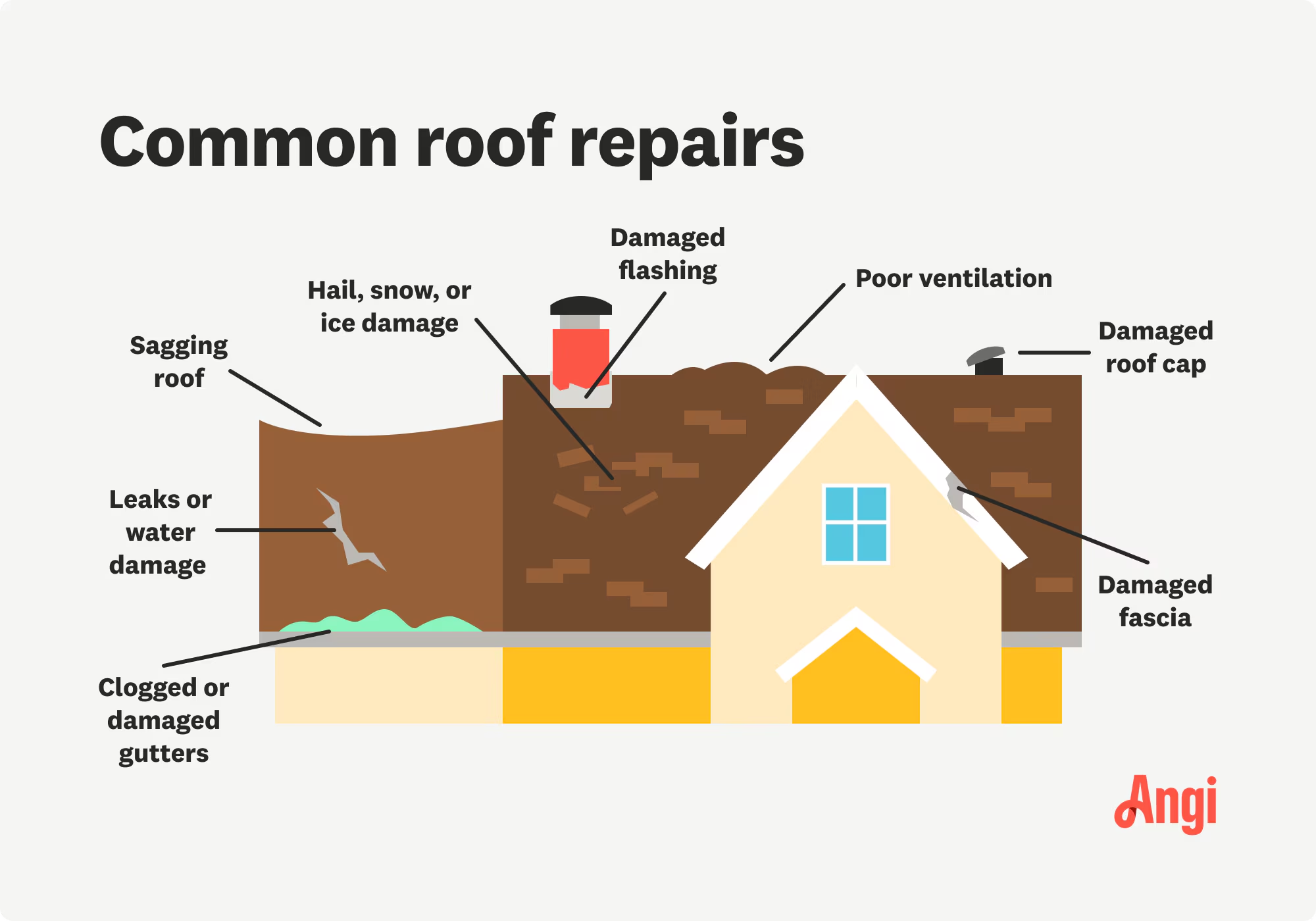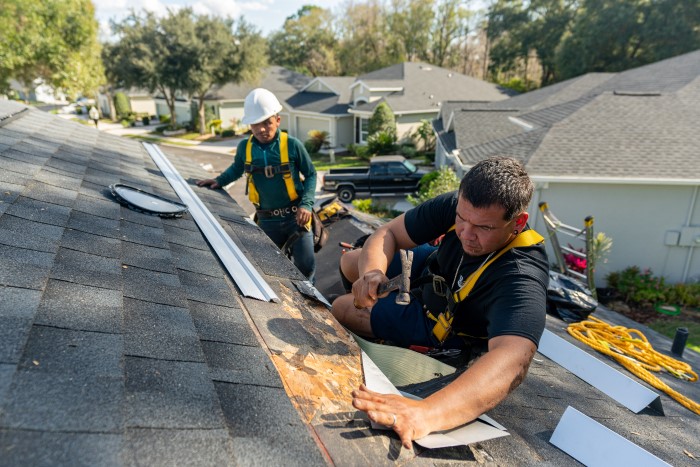Roofing Companies Oahu: Top-Rated Roofers for All Roofing Projects
Wiki Article
Understanding the Various Sorts Of Roofings: A Comprehensive Overview for Homeowners
With an array of options-- ranging from the conventional gable to the contemporary flat-- each kind presents distinct benefits and difficulties that need to straighten with the homeowner's particular needs and environmental considerations. As we explore the ins and outs of various roof covering types, it becomes obvious that one size does not fit all; the right selection may amaze you.Saddleback Roof
Saddleback roofs, defined by their triangular form, are among the most prominent roof covering styles due to their simplicity and efficiency in losing water and snow. This layout features two sloping sides that satisfy at a ridge, enabling efficient drain and minimizing the danger of water accumulation. The steep pitch generally connected with saddleback roofs enhances their ability to take care of hefty precipitation, making them ideal for numerous environments.In enhancement to their sensible benefits, gable roofing systems use visual flexibility. They can be adapted to different building designs, from typical to modern-day homes. The layout can also suit additional features such as dormer windows, which boost natural light and ventilation in the attic area.
Additionally, gable roofing systems offer sufficient room for insulation, adding to energy efficiency. House owners can choose from a variety of roof covering materials, consisting of asphalt roof shingles, steel, and tiles, additionally boosting customization alternatives.
Regardless of their advantages, gable roof coverings might call for extra assistance in locations prone to high winds or hefty snowfall. Generally, the saddleback roof stays a popular choice due to its blend of capability, longevity, and visual charm.
Flat Roofs
Flat roofings are frequently acknowledged for their minimal design and practical applications, especially in industrial and industrial setups (oahu roofing). These roofings feature a straight or almost horizontal surface area, which permits very easy building and construction and flexible room application. While they may do not have the aesthetic appeal of pitched roofing systems, level roofs offer many benefits, particularly in city atmospheres where optimizing space is criticalOne of the main advantages of flat roof coverings is their ease of access. Homeowners can use the roof space for numerous objectives, such as rooftop yards, terraces, or photovoltaic panel setups. In addition, flat roofings are typically a lot more cost-effective to set up and maintain contrasted to their sloped counterparts, as they need less products and labor.
Common materials made use of for flat roofs include built-up roof covering (BUR), changed bitumen, and single-ply membrane layers, each offering distinct benefits. Overall, level roofing systems serve as a adaptable and practical choice for numerous homeowners and companies alike.
Hip Roofings
Hip roofs are characterized by their sloped sides that merge at the top, developing a ridge. This design stands out from gable roofings, as all 4 sides of a hip roofing system slope downwards toward the wall surfaces, providing a much more steady structure. The angle of the inclines can differ, enabling flexibility in architectural visual appeals and performance.Among the primary advantages of hip roofs is their capability to stand up to hefty winds and unfavorable climate condition. The sloped blog surface areas enable better water drain, reducing the danger of leakages and water damage. In addition, hip roof coverings supply increased attic space, which can be utilized for storage or also exchanged livable areas.
Nonetheless, constructing a hip roofing can be much more complicated and expensive than simpler roof covering types, such as saddleback roofs. The additional product and labor involved in developing the slopes and ensuring correct architectural honesty can bring about higher expenditures. Regardless of these disadvantages, lots of home owners prefer hip roofings for their resilience, aesthetic charm, and potential for power performance.
Mansard Roofings
Mansard roofing systems, commonly identified by their distinct four-sided style, function two slopes on each side, with the reduced slope being steeper than the top. This architectural design, stemming from France in the 17th century, is not only cosmetically attractive but practical, as it optimizes the useful area in the upper floors of a building. The high lower incline permits even more headroom, making it an ideal selection for attic rooms or loft spaces, which can be exchanged living areas.Mansard roofs are characterized by their adaptability, accommodating numerous architectural designs, from standard to modern-day. They can be built with various materials, consisting of asphalt tiles, slate, or metal, supplying home owners with a range of choices to suit their spending plans and choices. Additionally, the layout permits the combination of dormer home windows, improving natural light and air flow in the top levels.
Nevertheless, it this post is crucial to take into consideration the prospective downsides. Mansard roofs may require even more upkeep due to the intricacy of their design, and their steep slopes can be testing for snow and rain runoff. Generally, mansard roofings combine sophistication with functionality, making them a popular choice among you could try here property owners seeking unique building functions.
Shed Roof Coverings
As house owners increasingly seek simpleness and capability in their building designs, dropped roofing systems have become a popular choice. Identified by a single sloping aircraft, a shed roof covering provides a minimal visual that matches numerous home designs, from modern to rustic.Among the primary advantages of a shed roofing is its uncomplicated construction, which typically equates to lower labor and material expenses. This layout allows for reliable water drain, decreasing the threat of leaks and water damages. Additionally, the upright slope supplies enough area for skylights, improving natural light within the inside.
Lost roofings also provide flexibility in regards to use. They can be successfully incorporated right into enhancements, garages, or outside frameworks like sheds and pavilions. Moreover, this roofing design can suit numerous roof materials, consisting of steel, asphalt tiles, or also eco-friendly roofings, lining up with environment-friendly efforts.
Nonetheless, it is necessary to think about regional environment problems, as heavy snow lots may demand adjustments to the roof covering's angle or framework. In general, dropped roofs present a functional and visually pleasing choice for property owners wanting to maximize functionality without jeopardizing style.
Conclusion


Gable roofings, characterized by their triangular form, are among the most prominent roof styles due to their simpleness and efficiency in dropping water and snow. oahu roofing. The steep pitch frequently linked with gable roof coverings improves their ability to manage hefty precipitation, making them appropriate for various environments
While they may do not have the aesthetic charm of pitched roofings, level roofings use numerous advantages, especially in city settings where optimizing room is essential.

Report this wiki page